 |
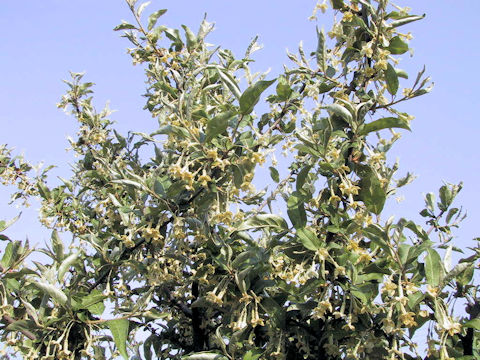

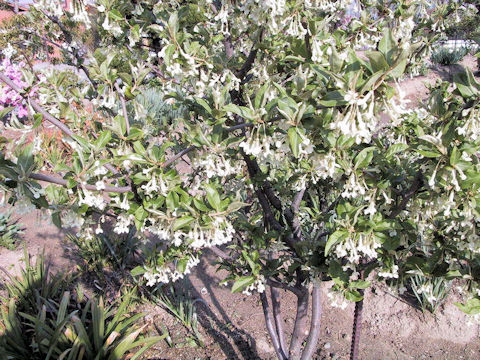

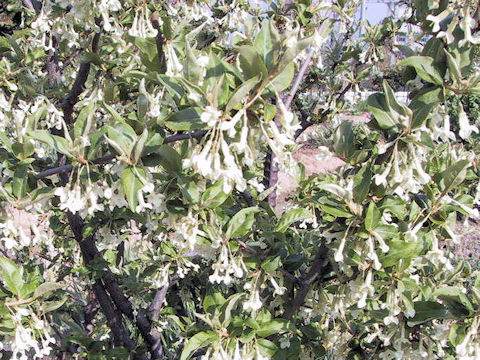

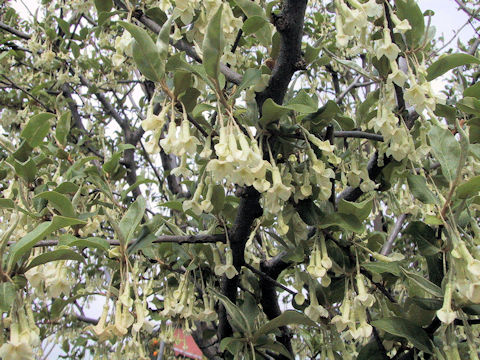

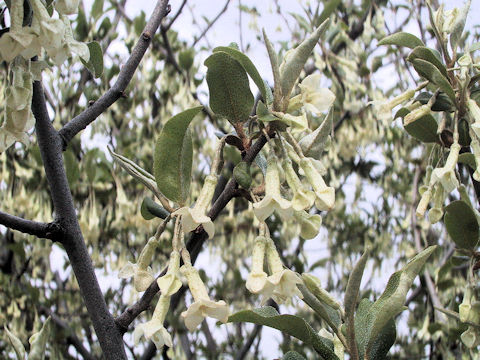

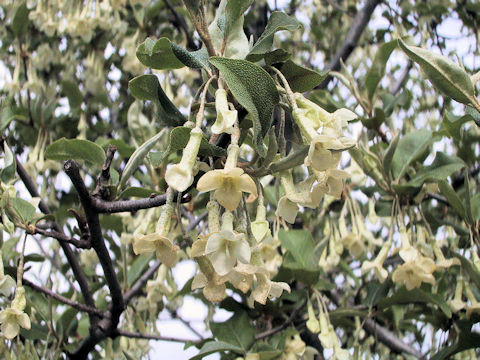

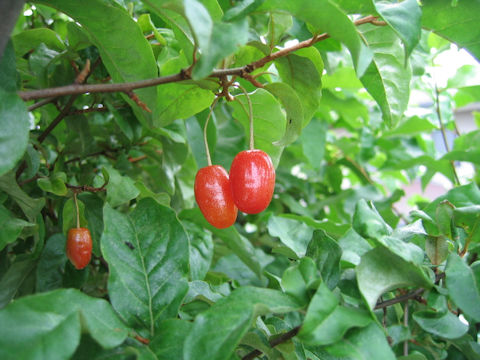

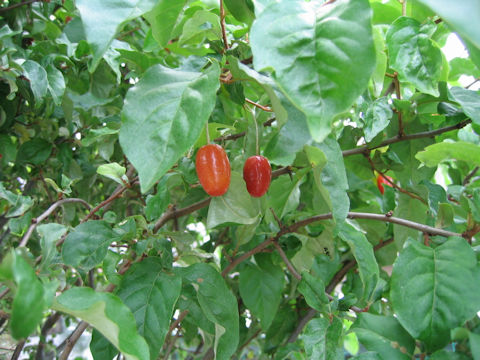

|

|
わが国の本州、近畿地方以北から北海道南部に分布する「とうぐみ」の園芸品種です。枝には棘がなく、果実は大きくて2センチ以上になります。また渋みが少ないため食用としても栽培されます。4月から5月ごろ、花弁のない花(4裂した萼筒)を下垂して咲かせます。別名で「だいおうぐみ(大王茱萸)」とも呼ばれます。
|

|
グミ科グミ属の落葉低木で、学名は Elaeagnus multiflora var. hortensis cv. Gigantea。英名はありません。
|

|
The "Bikkuri-gumi" (Elaeagnus multiflora var. hortensis cv. Gigantea) belongs to Elaeagnaceae (the Oleaster family). It is a deciduous small tree that is a horticultural variety of "Tou-gumi", which is distributed from the Kinki region of Honshu north to southern Hokkaido in Japan. The branches are thornless, and the fruits are large, reaching more than 2 cm in diameter. The petal-less flowers (four-petaled calyx tube) bloom drooping downwards from April to May. It is also known as "Daioh-gumi" in Japan.
|

|
[上・中1〜2] 大阪府四條畷市清滝中町にて、2001年04月09日撮影。
[中3〜中5] 同上にて、2003年04月13日撮影。
[中6・下] 同上にて、2004年05月23日撮影。
|









